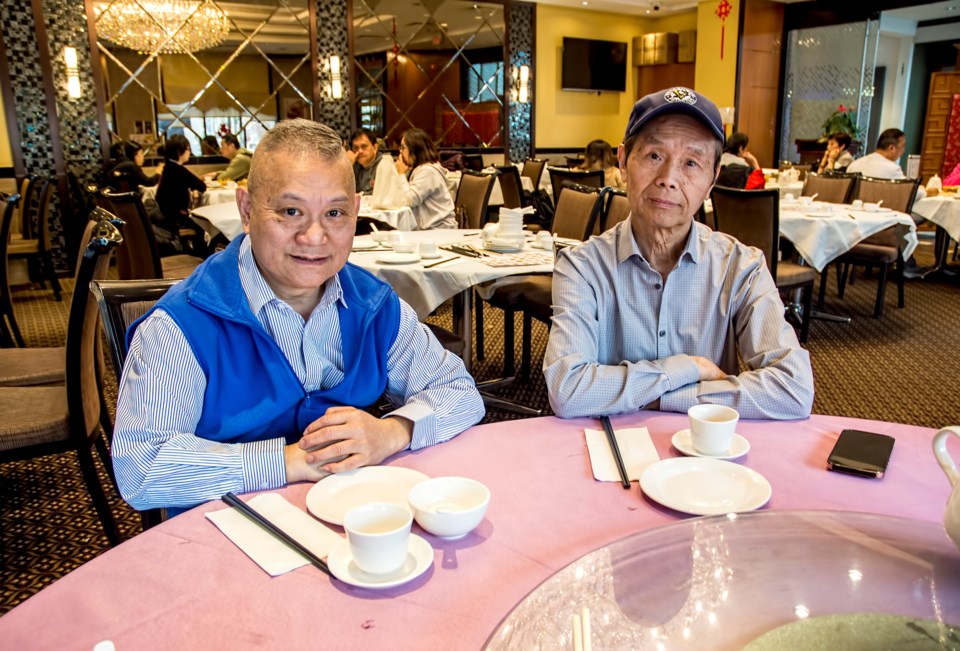As an Asia-Pacific gateway for North America with a large Asian population, Metro Vancouver has long been a go-to destination for locals and tourists alike to enjoy authentic Asian food and, specifically, exceptional Chinese food.
But a local industry organization says the supply of Chinese restaurants in the region has now surpassed demand for the cuisine, and that this has resulted in many restaurants closing or close to shutting their businesses down.
“We estimate that the number of Chinese restaurants is 20 per cent more than the number of customers for them in Metro Vancouver. The market has been overly saturated,” said William Tse, director of the BC Asian Restaurant Café Owners Association.
The association has more than 120 members and the majority of them are owners of Chinese restaurants throughout the province.
Tse said that, at the moment, at least 10 restaurant owners are asking the association to help find buyers to take over their business, and some have asked the organization for help finding a new location with lower rent. Many have already closed or sold their businesses, he said.
“They told us they are losing money every month. It is really tough to run a restaurant now with high property tax, rent, labour costs and food costs. But it’s also hard to sell the business in the current market,” said Tse.
Many local consumers have reined in their spending in response to high interest rates. A TD Bank survey released last November indicated that 67 per cent of British Columbians planned to eat out less.
At the same time, the slow recovery of Chinese tourists to Canada has been another hit for local Chinese restaurants.
Data released by Statistics Canada in March showed there were around 225,000 Chinese visitors to Canada in 2023, less than one-third of the peak volumes registered in 2018 and 2019. Tensions remain fraught between Ottawa and Beijing.
“When people have family or friends visiting, it’s common to take them to eat out in restaurants. That was an important source of revenue for Chinese restaurants but that’s not happening a lot in recent years,” said Tse.
He added that although there are new restaurants opening now and then, given limited consumer demand, new market entrants are likely attracting customers away from existing restaurants—a trend that is not sustainable for the industry as a whole.
“What we are seeing is when a new restaurant opens, it’s popular for a few weeks or months, and then customers move to the next new restaurants,” said Tse.
“We hope that the government will take action and provide incentives to attract tourists and visitors to B.C. to increase the demand and open up the market.”
Chinese restaurant owners are not the only ones that are feeling the pinch. As of March 2023, 34 per cent of restaurant companies were operating at a loss, and another 17 per cent were breaking even, according to Restaurants Canada. And the situation has not improved much.
B.C.’s foodservices and bar sector saw a 6.9-per-cent month-over-month decline in January to $1.324 billion, according to Statistics Canada data released last month.
“This is the hardest time I think the industry’s faced in a long time,” said Ian Tostenson, president and CEO of BC Restaurant and Food Services Association.
He said some Chinese restaurants can find themselves at an even bigger disadvantage due to their footprint and menu offering—factors that, while traditionally helpful for hosting large numbers of customers in big groups, carry higher operational costs.
“I think what you’re going to see is that new restaurants will be smaller, more speciality type restaurants, and they won’t have big menus,” said Tostenson.
Some new restaurants forego waiters and instead require customers to place orders at a counter—something that helps reduce labour costs and avoids the challenge of securing staff, he added.
Other examples of initiatives being implemented to drum up business include offering and expanding happy hour sales, offering lunch menus, extending business hours, providing all-you-can-eat experiences and using robots to undertake some cooking tasks.
“For initiatives such as all-you-can-eat, the margin is really thin and owners hardly make any money. It’s just to keep the restaurants open and pay the rent and employees,” said Jun Yang, owner of Richmond-based South Silk Road Restaurant.
He recently extended his restaurant’s hours from 10 p.m. to 1 a.m., after seeing a decrease in customers during the day.
Tostenson said he expects the situation to improve for B.C. restaurants next year, with interest rates projected to come down, and consumer confidence and disposable income expected to recover.
Meanwhile, he said he hopes that government will do more to help restaurant owners, such as: Cutting red tape, speeding up approval processes, keeping business policies consistent, and continuing to promote tourism and dining out.
Twitter.com/xiong_daisy


